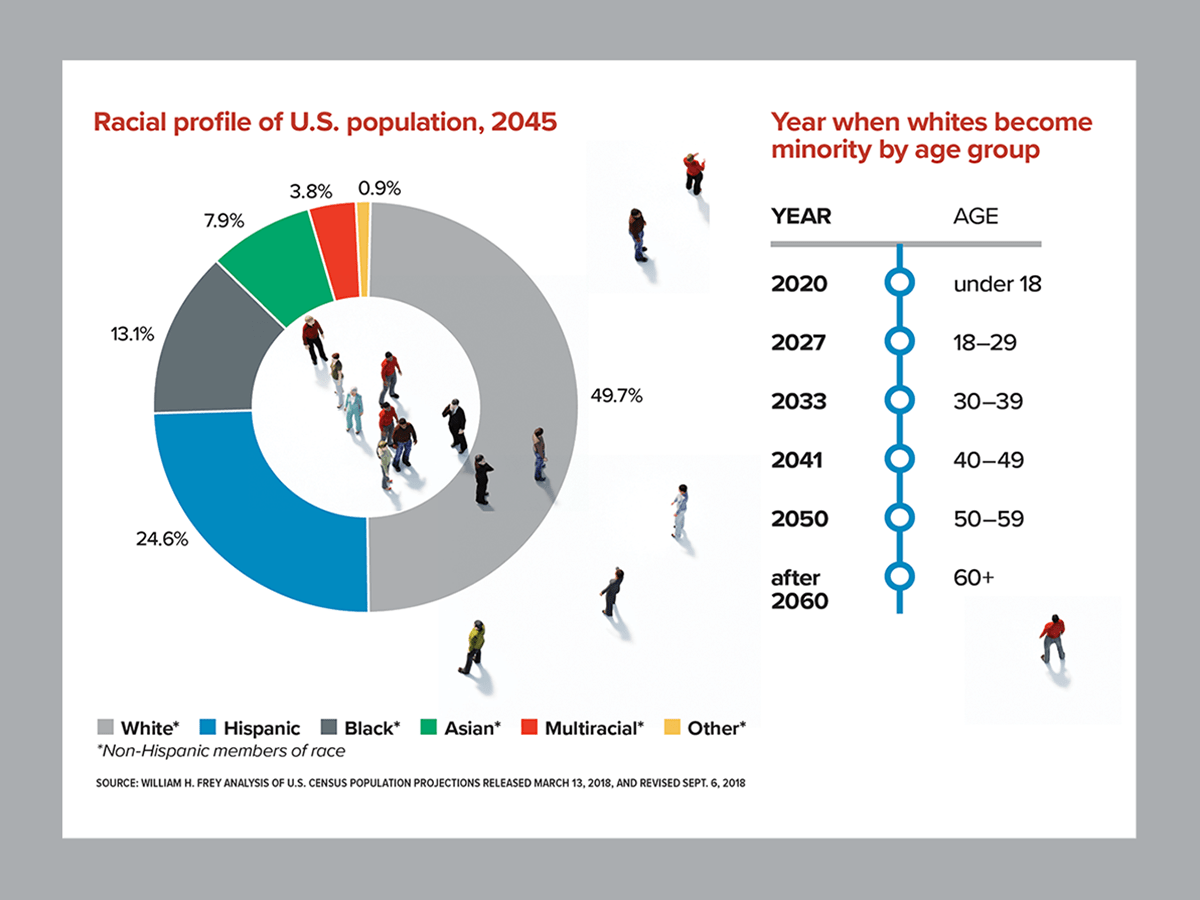Understanding Audience Demographics sets the stage for this enthralling narrative, offering readers a glimpse into a story that is rich in detail with American high school hip style and brimming with originality from the outset.
Dive into the world of audience demographics and discover how businesses can thrive by truly knowing their customers.
Importance of Understanding Audience Demographics
Understanding audience demographics is crucial for businesses as it provides valuable insights into who their customers are, their preferences, behaviors, and purchasing habits. By knowing this information, businesses can tailor their marketing strategies and products/services to meet the specific needs of their target audience, leading to increased customer satisfaction and loyalty.
Impact on Marketing Strategies
- Targeted Advertising: Knowing the demographics of the audience allows businesses to create targeted advertising campaigns that resonate with their target market. For example, a clothing brand targeting young adults will use different messaging and platforms compared to a brand targeting middle-aged professionals.
- Product Development: Understanding audience demographics helps businesses in developing products/services that cater to the specific needs and preferences of their customers. For instance, a tech company targeting senior citizens will focus on creating user-friendly products with larger fonts and simpler interfaces.
- Pricing Strategies: Demographic data can also influence pricing strategies. For example, luxury brands targeting high-income individuals will set higher price points compared to brands targeting budget-conscious consumers.
Tailoring Products/Services to Customer Needs
- Customization: By understanding audience demographics, businesses can customize their products/services to better align with the preferences of their target market. For example, a skincare brand targeting teenagers may offer products specifically formulated for acne-prone skin.
- Customer Experience: Demographic data helps businesses enhance the overall customer experience by personalizing interactions and offerings. For instance, a restaurant targeting families with young children may provide kid-friendly menu options and play areas.
- Brand Loyalty: Tailoring products/services to customer needs based on demographics can lead to increased brand loyalty and repeat purchases. When customers feel understood and valued, they are more likely to remain loyal to the brand.
Types of Audience Demographics

Understanding different types of audience demographics is crucial for businesses to tailor their marketing strategies effectively. Let’s delve into the significance of each demographic type in understanding consumer behavior.
Age, Understanding Audience Demographics
Age demographic plays a vital role in shaping consumer behavior as different age groups have varying preferences, needs, and buying habits. For example, younger audiences might be more inclined towards technology-related products, while older audiences might prefer traditional and nostalgic items.
Gender
Gender demographics help businesses create targeted marketing campaigns that resonate with specific genders. Understanding the differences in purchasing decisions between males and females can lead to more personalized and effective advertising strategies.
Location
Location demographics provide insight into regional preferences and cultural influences on consumer behavior. Factors such as climate, population density, and local traditions can impact the way people shop and make purchasing decisions.
Income
Income demographics are crucial in understanding the purchasing power of different consumer segments. Individuals with higher incomes may be willing to splurge on luxury items, while those with lower incomes might prioritize budget-friendly options.
Education
Education demographics shed light on the knowledge and awareness levels of consumers, influencing their choices and preferences. Highly educated individuals may value quality and innovation, while less educated consumers might prioritize affordability and practicality.
Psychographic vs. Behavioral Demographics
Psychographic demographics focus on consumers’ lifestyle, values, interests, and personalities, providing a deeper understanding of their motivations and preferences. On the other hand, behavioral demographics analyze consumers’ purchasing patterns, brand loyalty, and decision-making processes, offering valuable insights into their buying behavior over time.
By comprehensively analyzing various audience demographics, businesses can tailor their marketing efforts to target specific consumer groups effectively, ultimately driving sales and building brand loyalty.
Tools and Methods for Analyzing Audience Demographics

Analyzing audience demographics is crucial for businesses to tailor their marketing strategies effectively. Utilizing the right tools and methods can provide valuable insights into the characteristics and preferences of the target audience.
Popular Tools for Analyzing Audience Demographics
- Google Analytics: This tool provides detailed information about the demographics of website visitors, including age, gender, location, and interests.
- Social Media Insights: Platforms like Facebook and Instagram offer insights into the demographics of followers, such as age, gender, and geographic location.
- Surveys: Conducting surveys among customers can help gather demographic data, preferences, and feedback.
Comparing Quantitative and Qualitative Methods
- Quantitative Methods: These involve numerical data and statistics, providing a clear overview of demographics. Examples include surveys, website analytics, and social media metrics.
- Qualitative Methods: These focus on understanding the motivations and behaviors of the audience. Methods include focus groups, interviews, and observations.
Step-by-Step Guide for Conducting Demographic Research
- Define Research Objectives: Clearly Artikel what demographic information is needed and how it will be used.
- Choose Data Collection Methods: Select the tools and methods that align with the research objectives, such as surveys, analytics tools, or social media insights.
- Collect Data: Implement the chosen methods to gather demographic information from the target audience.
- Analyze Data: Use tools like Google Analytics or survey analysis software to interpret the collected data and extract meaningful insights.
- Apply Findings: Utilize the demographic insights to customize marketing strategies, product offerings, and communication channels to better resonate with the target audience.
Utilizing Audience Demographics for Decision Making
Businesses can leverage audience demographics to create targeted advertising campaigns that resonate with specific groups of people. By understanding the age, gender, location, income level, interests, and other demographic factors of their target audience, companies can tailor their marketing messages to effectively reach and engage potential customers.
Role of Demographics in Product Development and Market Positioning
Demographics play a crucial role in product development and market positioning by providing insights into the preferences and needs of different customer segments. By analyzing demographic data, businesses can identify market trends, anticipate consumer demands, and develop products that align with the interests and lifestyles of their target audience.
- For example, a skincare company targeting young adults may use demographic data to create products specifically designed for acne-prone skin, knowing that this age group is more likely to experience such issues.
- Similarly, a luxury car manufacturer may use demographic information to position their brand as exclusive and premium, appealing to high-income individuals who value status and quality.
Benefits of Understanding Audience Demographics for Business Growth
Understanding audience demographics can lead to business growth and increased customer loyalty by allowing companies to personalize their offerings, improve customer experiences, and build stronger relationships with their target market.
- By tailoring products and services to meet the specific needs of different demographic groups, businesses can attract new customers and retain existing ones.
- Moreover, by analyzing demographic data, companies can identify new market opportunities, expand their customer base, and stay ahead of competitors in the industry.